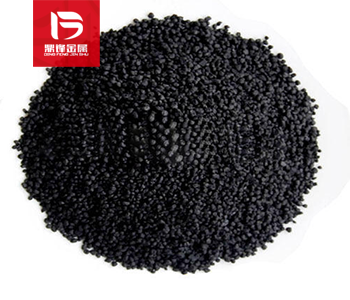
Palladium Aluminium Oxide Recycling
Palladium alumina is a catalytic material composed of palladium (Pd) supported on an alumina (Al₂O₃) carrier, usually in the form of highly dispersed metal palladium nanoparticles.Its composition includes:
Active metal: palladium (Pd), usually accounting for 0.1% to 10% (mass fraction)
Carrier: alumina (Al₂O₃), providing high specific surface area and stability
Additives (optional): such as rare earth metals or alkali metals, which can optimize catalytic activity.
- Parameter
- Related Questions and Answers
-
Name : Palladium Aluminium Oxide
-
Use : Automotive Catalysts,Petrochemicals & Synthesis
-
Application Areas : Hydrogen Production & Fuel Cells,Environmental Protection
-
Appearance and properties : Off-white, light grey or light yellow
-
Settlement Method : On-site
-
Recycling Type : Palladium recycling
-
Door-to-door recycling:worldwide
-
Customer service: Free content testing and door-to-door recycling
Palladium(II) Chloride Recycling
Palladium(II) chloride can also be used to wash the metal surface to remove dirt, grease and oil stains, and can also be used to make palladium alloys for the production of palladium Metalloid materials. Due to its high melting point, it can be used to prepare high melting point metal materials, such as for electronic components, automotive parts, medical devices, etc.
Search : Palladium(II) Chloride RecyclingPalladium Salt Recycling
Palladium salts typically exhibit white or yellow crystals with good solubility. Its melting point is relatively high, about 1554 ℃, and its density is 11.99 g/cm ³。 Palladium salts have good conductivity and thermal conductivity, making them an excellent catalyst material. Palladium salts are relatively stable in air, but are easily oxidized by oxidants such as nitric acid. It can form compounds with many non-metallic elements, such as Palladium(II) sulfide and Palladium(II) chloride. Palladium salts are usually divalent, and their Oxidation state can be+2 or+4.
Search : Palladium Salt RecyclingPalladium Slag Recycling
Palladium slag is a byproduct or waste containing palladium element, usually generated during the extraction and processing of palladium metal. Palladium slag refers to the residue, waste or waste generated during the production or use of palladium metal, which contains compounds or mixtures of palladium elements.
Search : Palladium Slag RecyclingWaste Palladium Carbon Recycling
Palladium on Carbon (Pd/C) is a supported palladium catalyst in which palladium metal is loaded onto high-surface-area activated carbon. It appears as a black or dark gray powder and is widely used in organic synthesis, pharmaceuticals, petrochemicals, and environmental protection. Pd/C is known for its high catalytic efficiency, stability, and recoverability, making it an essential catalyst in various industries.
Search : Waste Palladium Carbon RecyclingProduct Details
Palladium alumina is a catalytic material composed of palladium (Pd) supported on an alumina (Al₂O₃) carrier, usually in the form of highly dispersed metal palladium nanoparticles. Its composition includes:
Active metal: palladium (Pd), usually accounting for 0.1% to 10% (mass fraction)
Carrier: alumina (Al₂O₃), providing high specific surface area and stability
Additives (optional): such as rare earth metals or alkali metals, which can optimize catalytic activity
Application areas
Due to its excellent catalytic performance, palladium alumina is widely used in the following fields:
Automobile exhaust catalysis (TWC):
As part of a three-way catalyst (TWC), palladium is used to catalyze the oxidation of CO and unburned hydrocarbons (HC), and promote NOₓ reduction to reduce pollutant emissions.
Petrochemical and organic synthesis:
As a catalyst in hydrogenation reactions, such as olefin hydrogenation, aromatic compound hydrodesulfurization, etc.
Used in C-C coupling reactions (such as Heck reaction, Suzuki reaction).
Hydrogen production and fuel cells:
As a catalyst for hydrogen production from methanol or methane reforming.
Promote oxygen reduction reaction in fuel cells.
Environmental protection and waste gas treatment:
As a volatile organic compound (VOCs) catalytic oxidant, decomposing harmful substances in industrial waste gas.
Used for catalytic oxidation of chlorides (such as removing HCl, CO, etc. from industrial exhaust gas).

